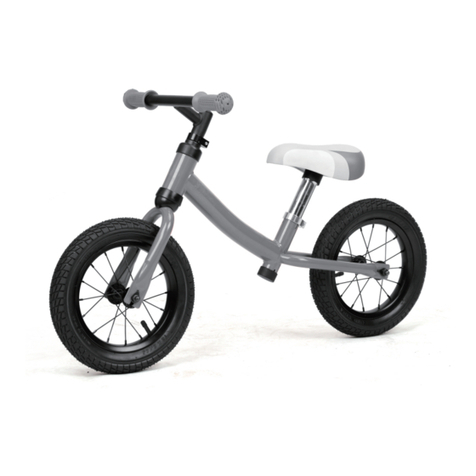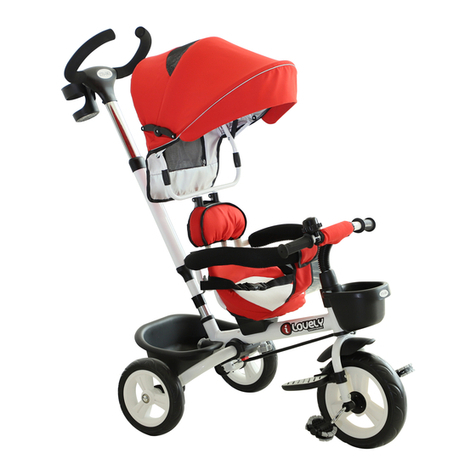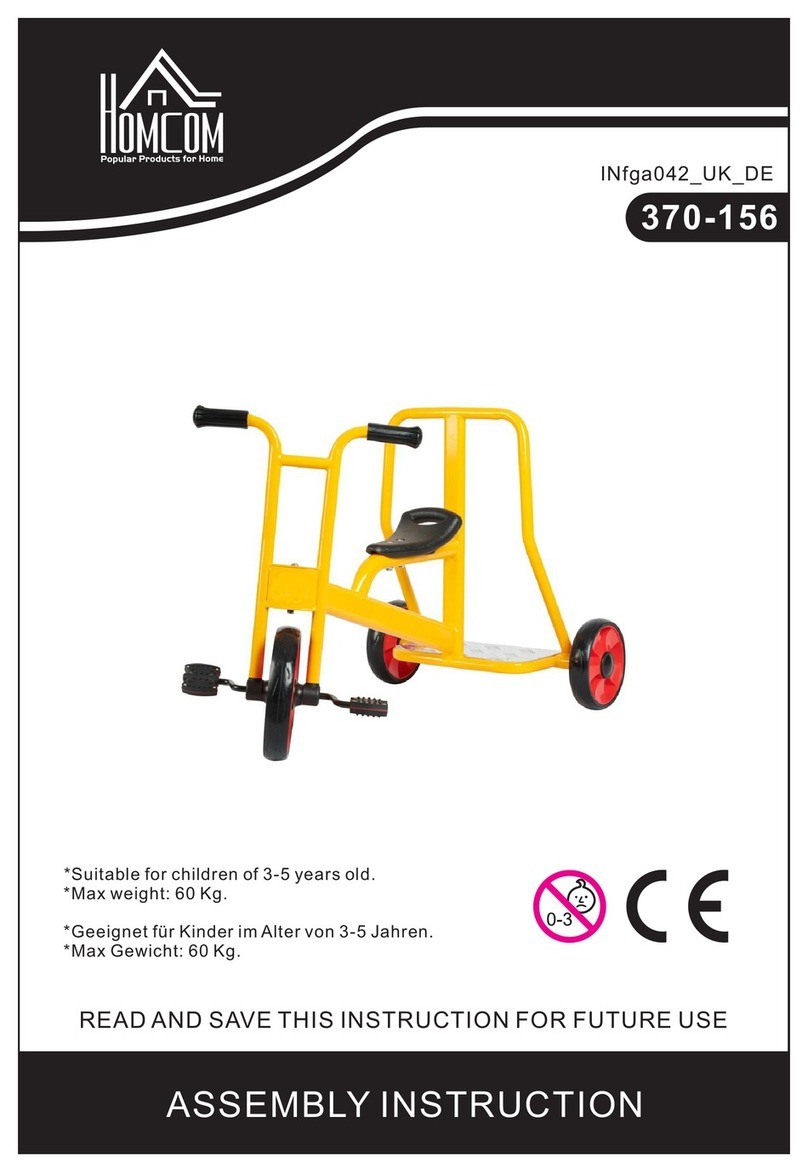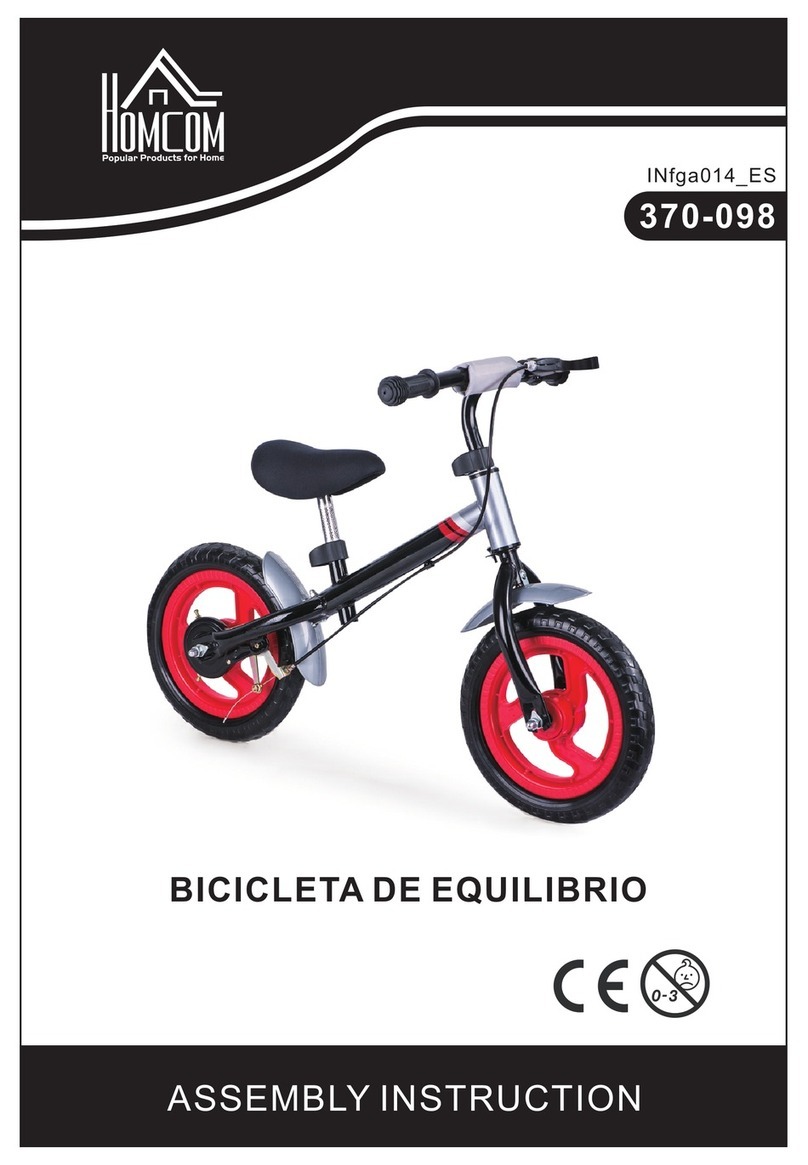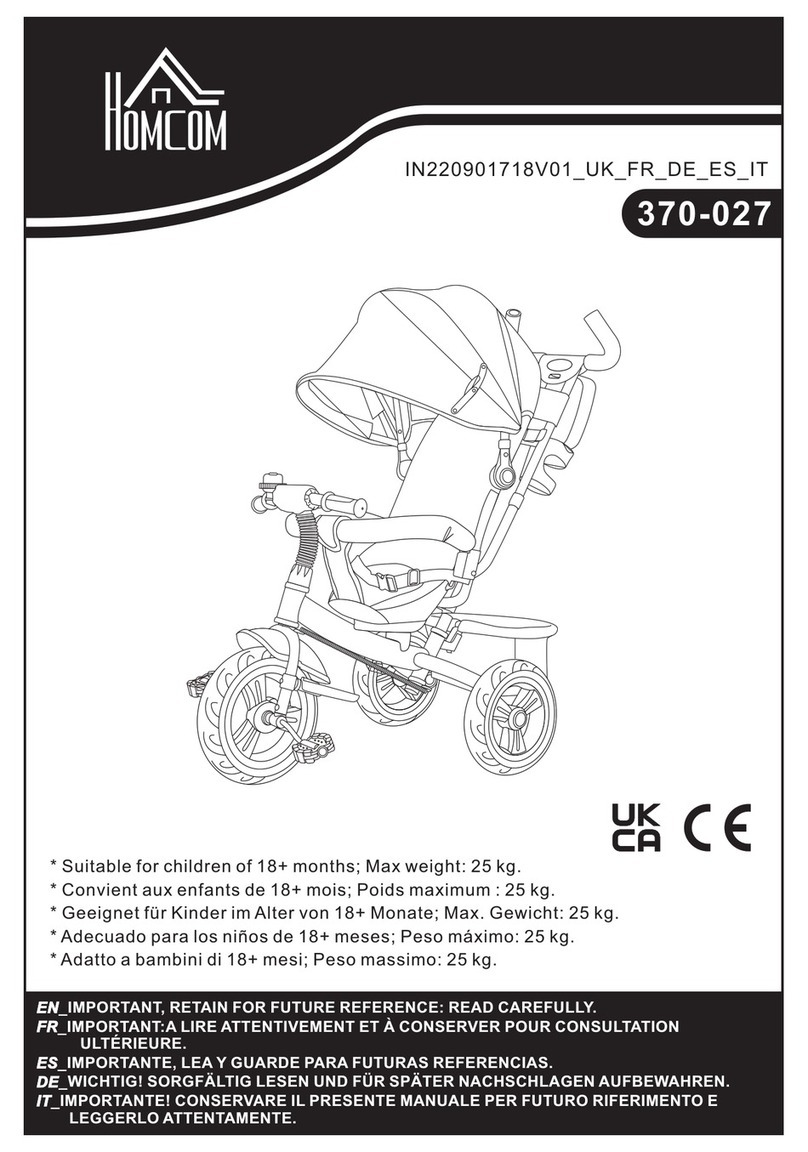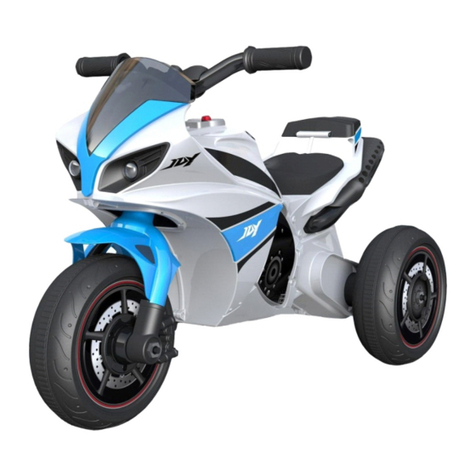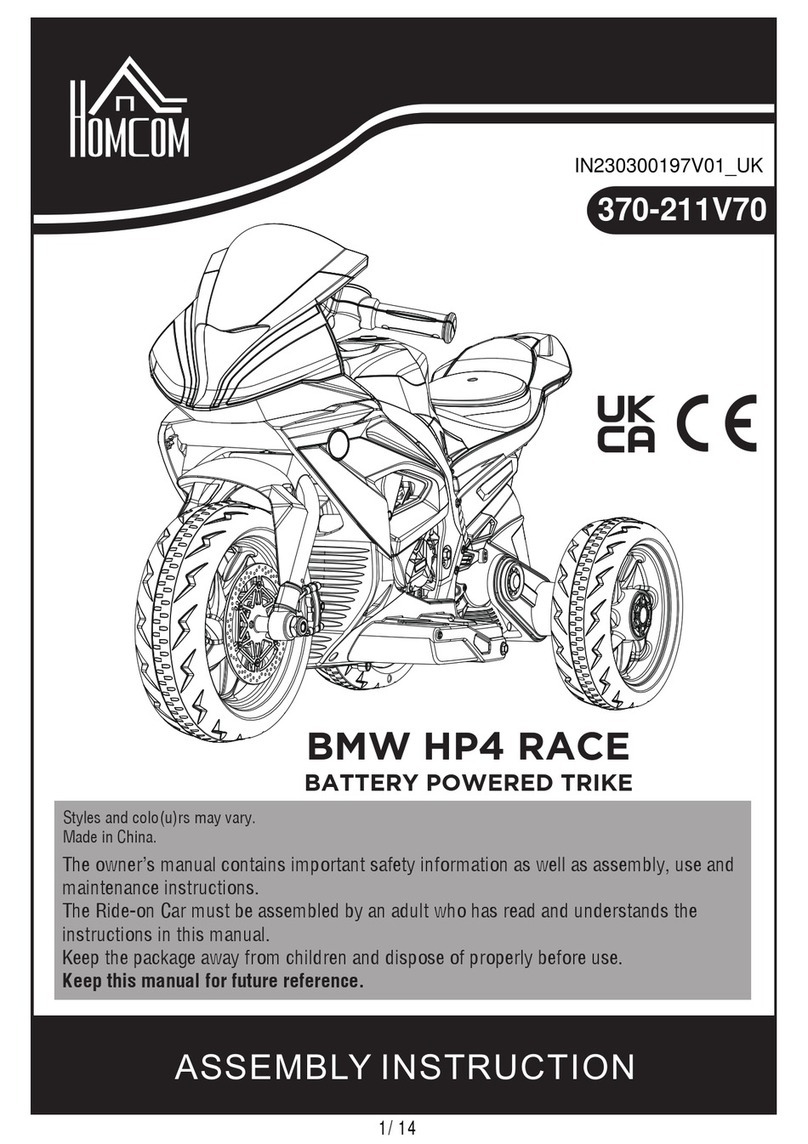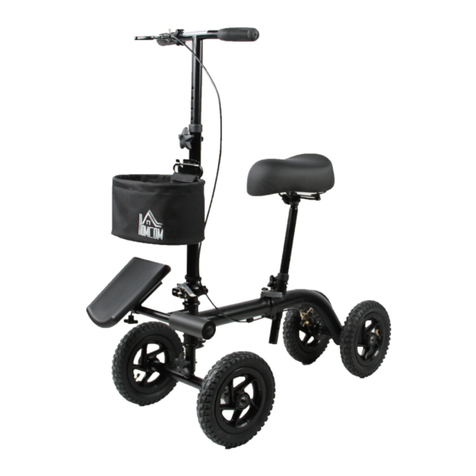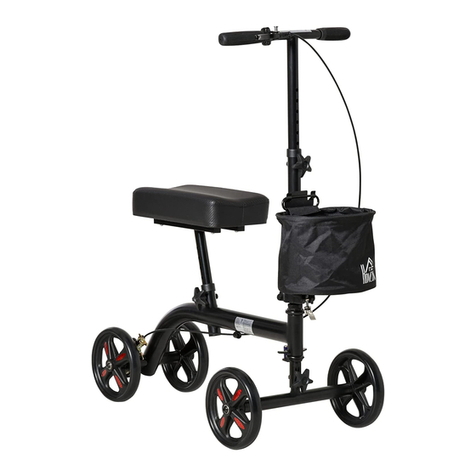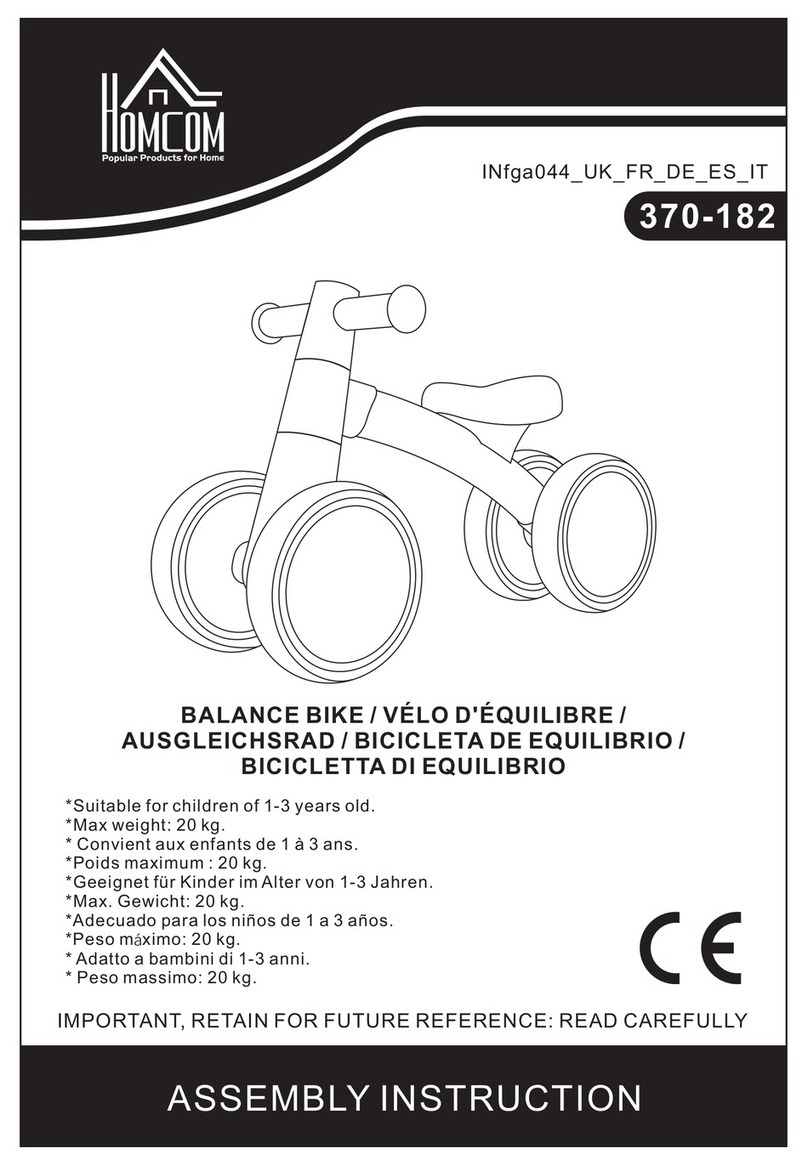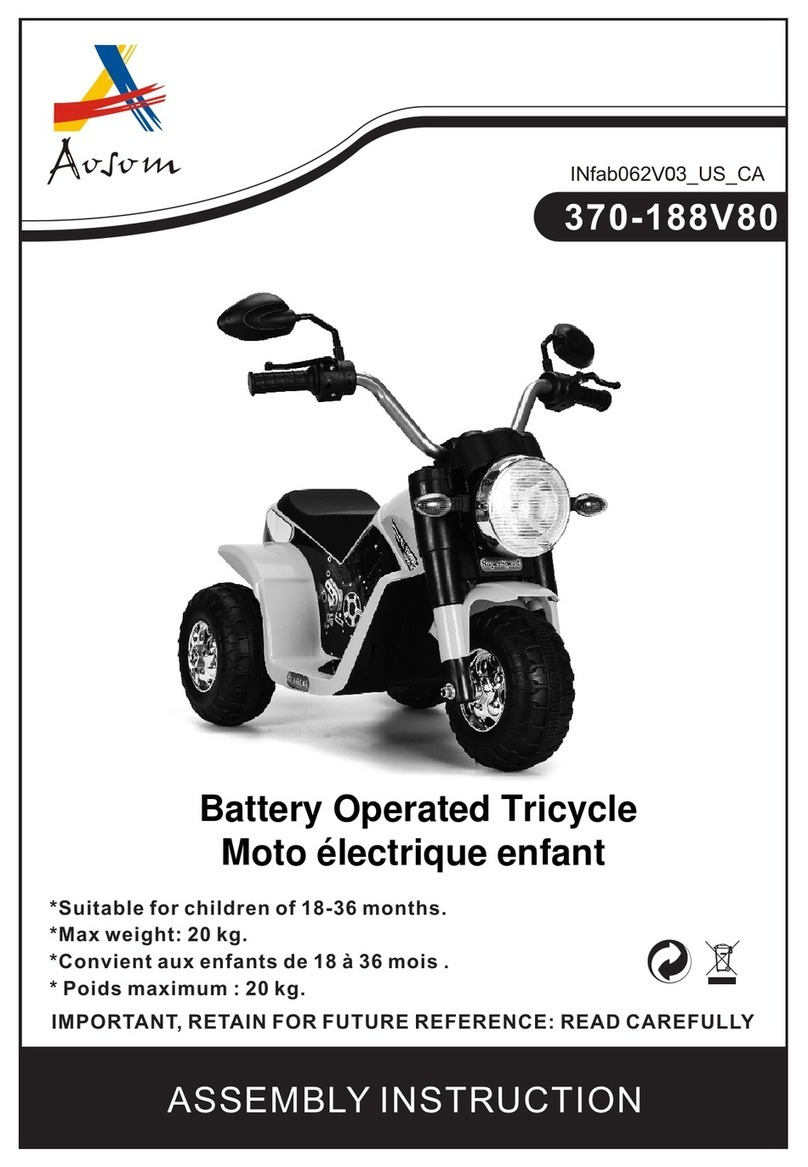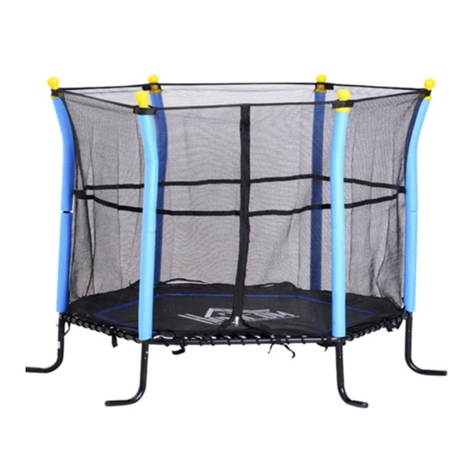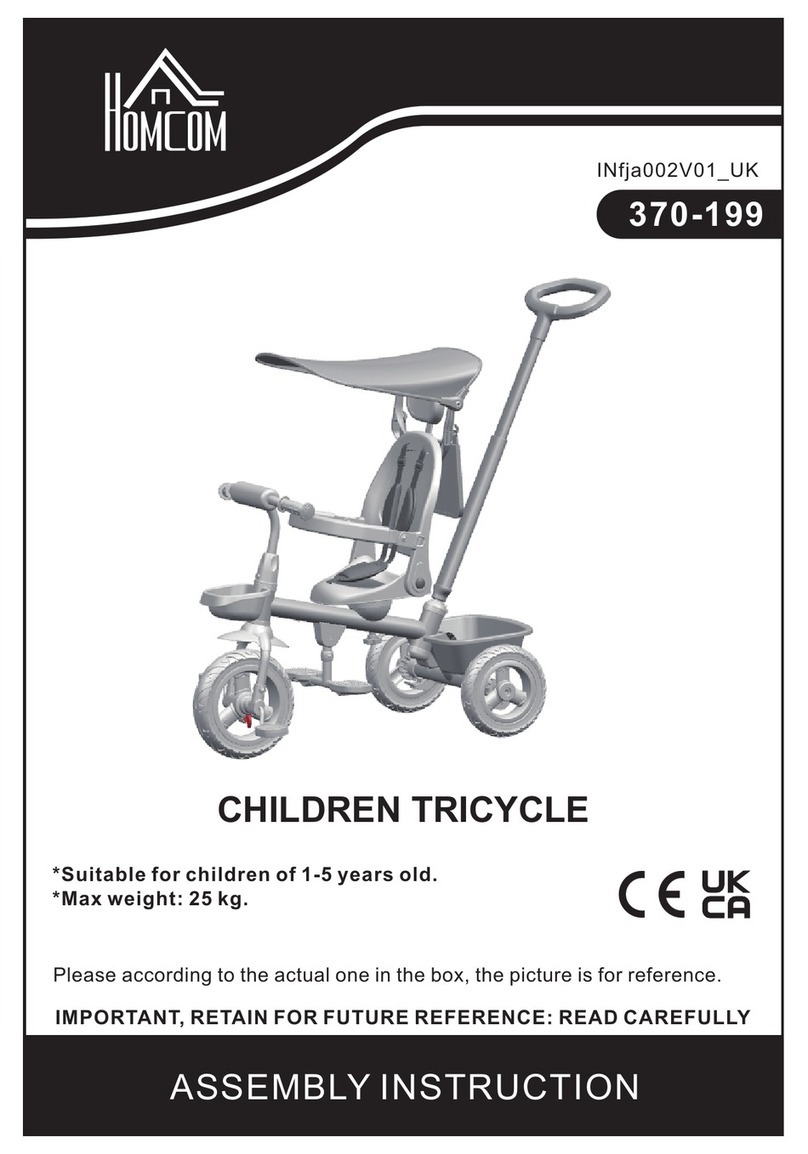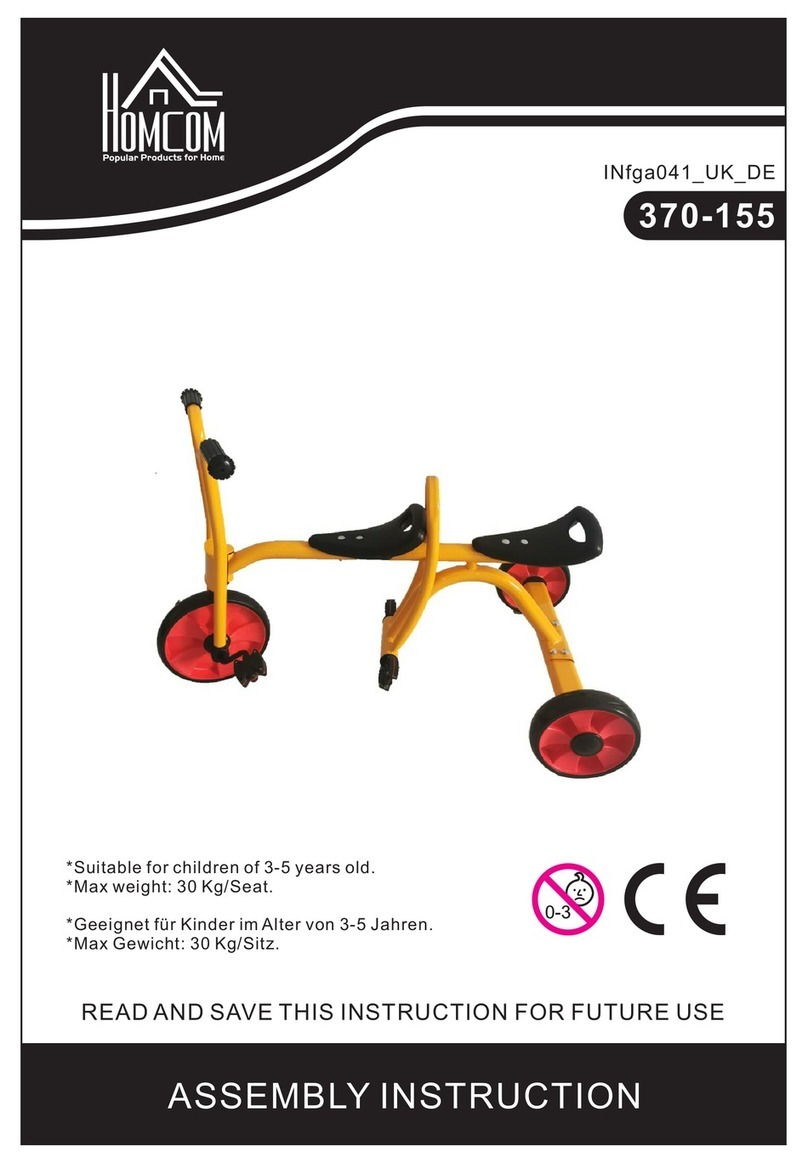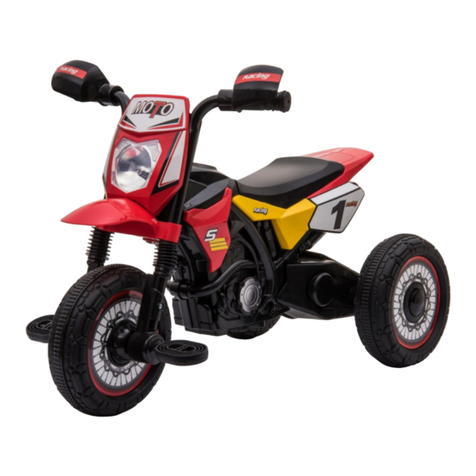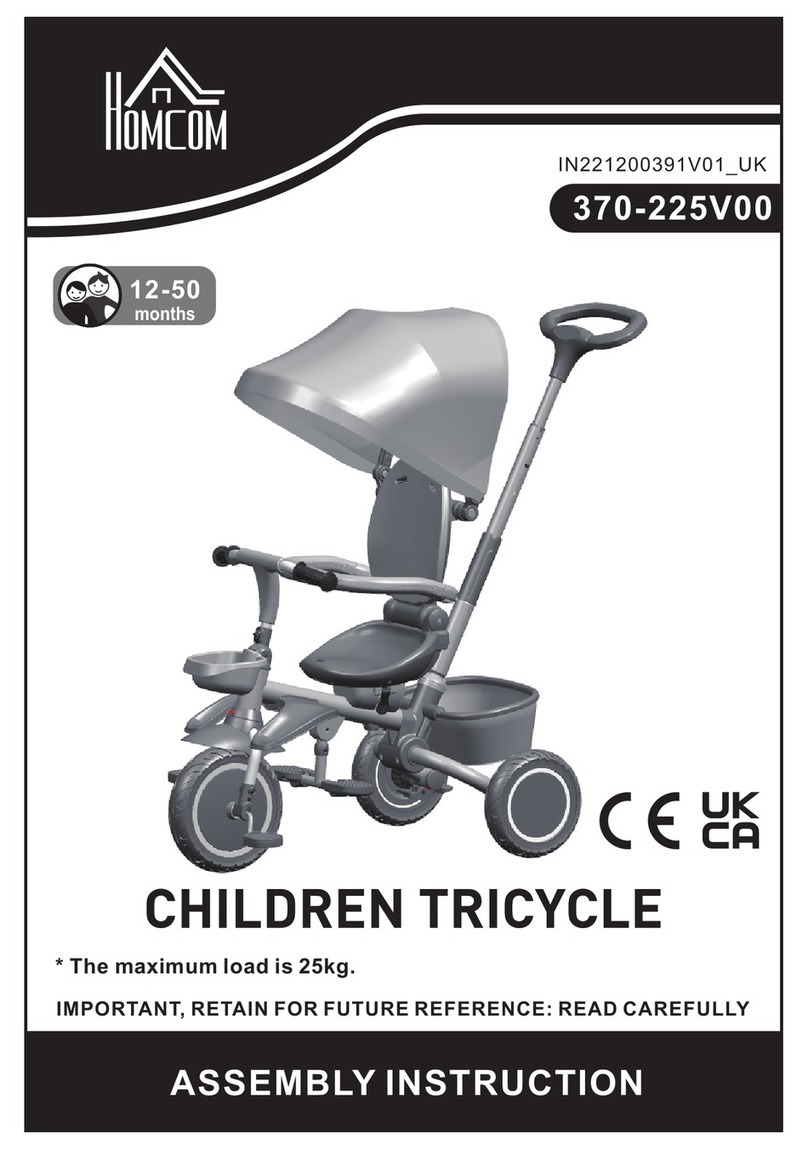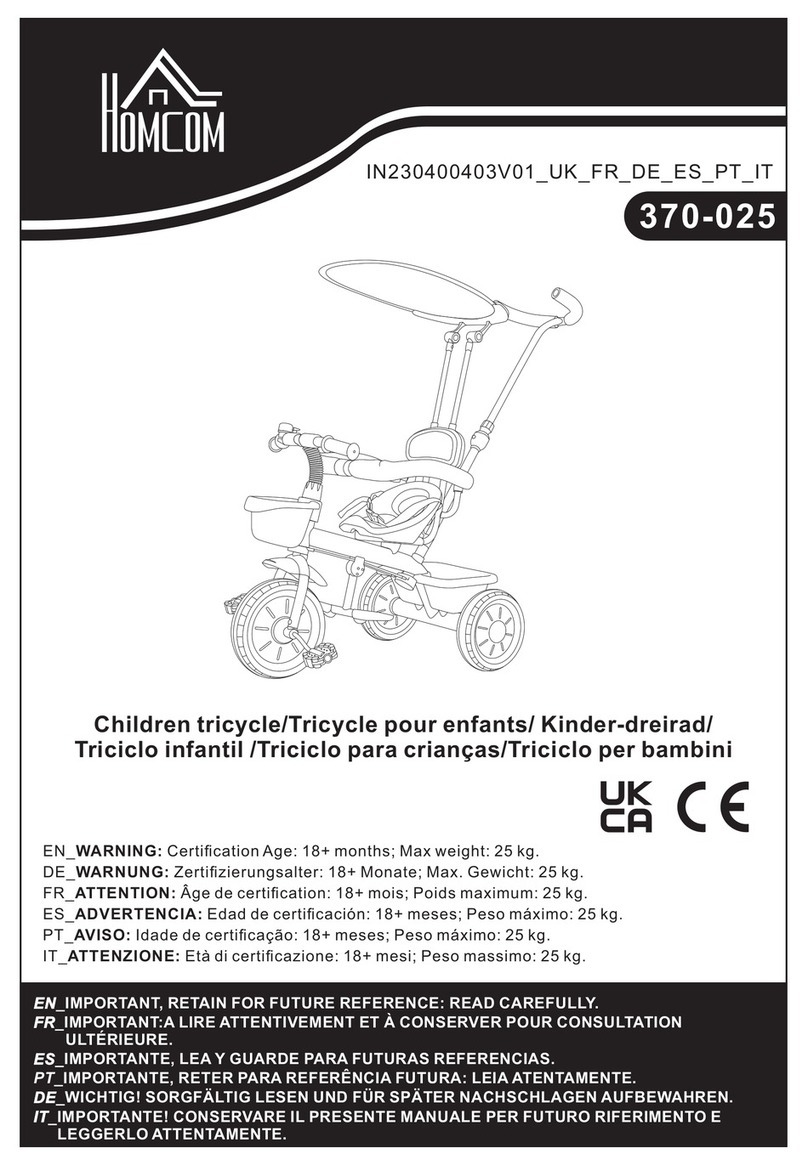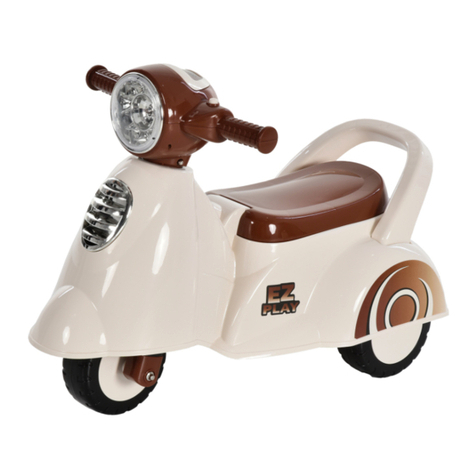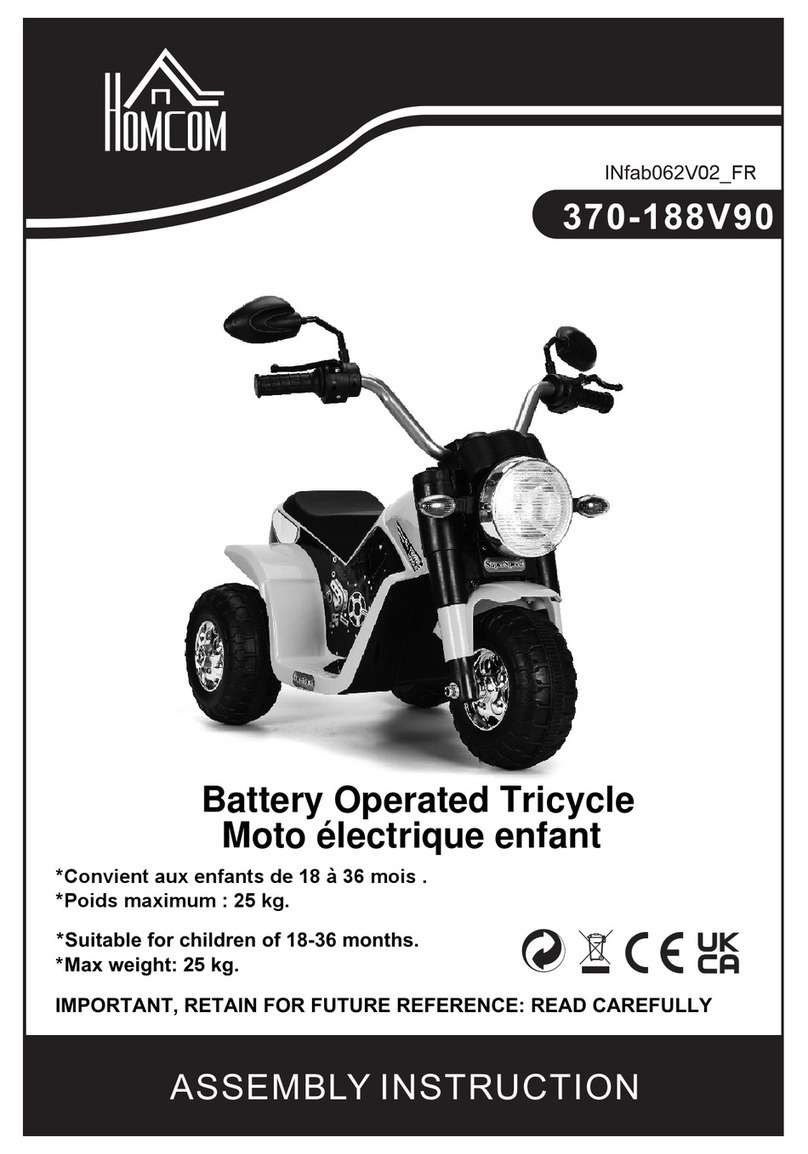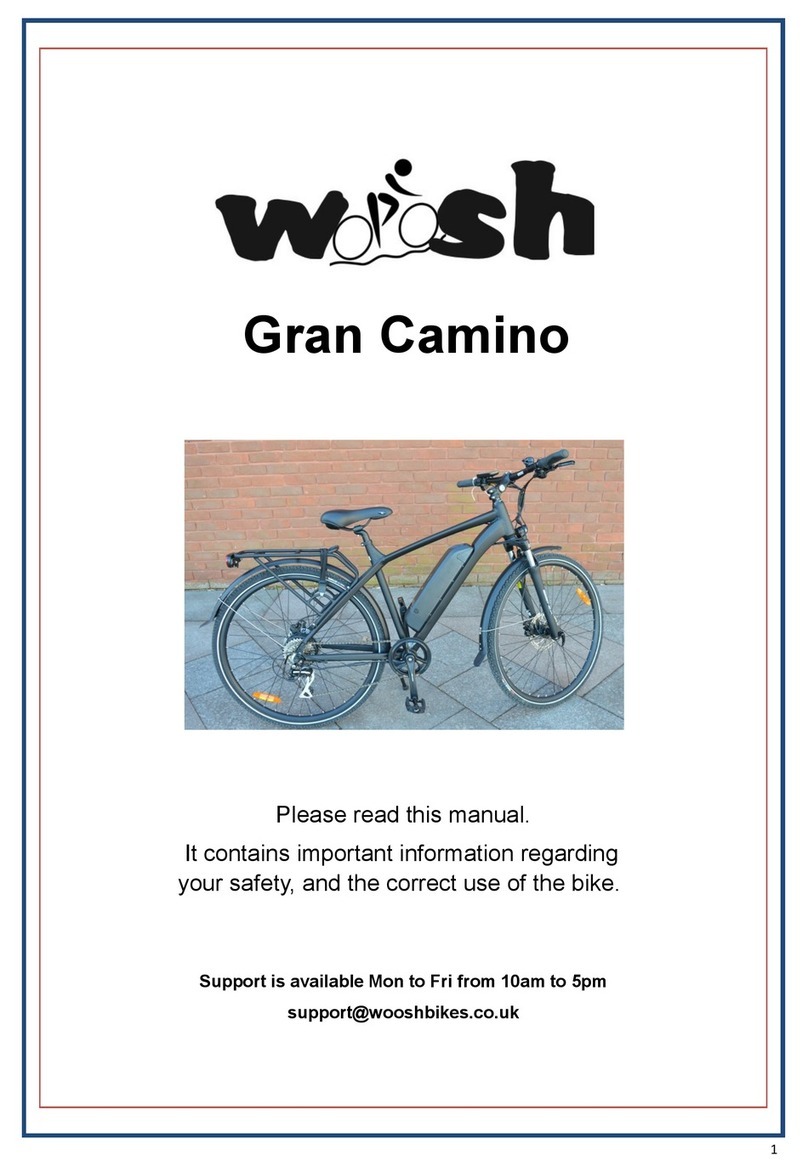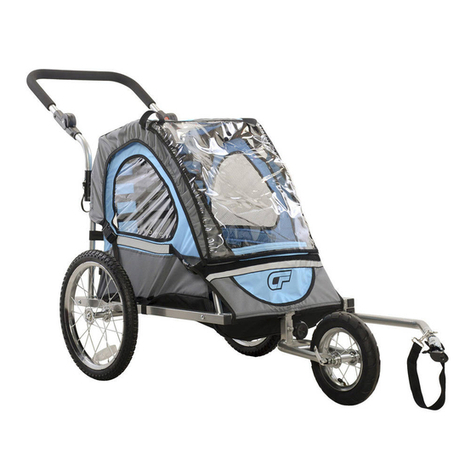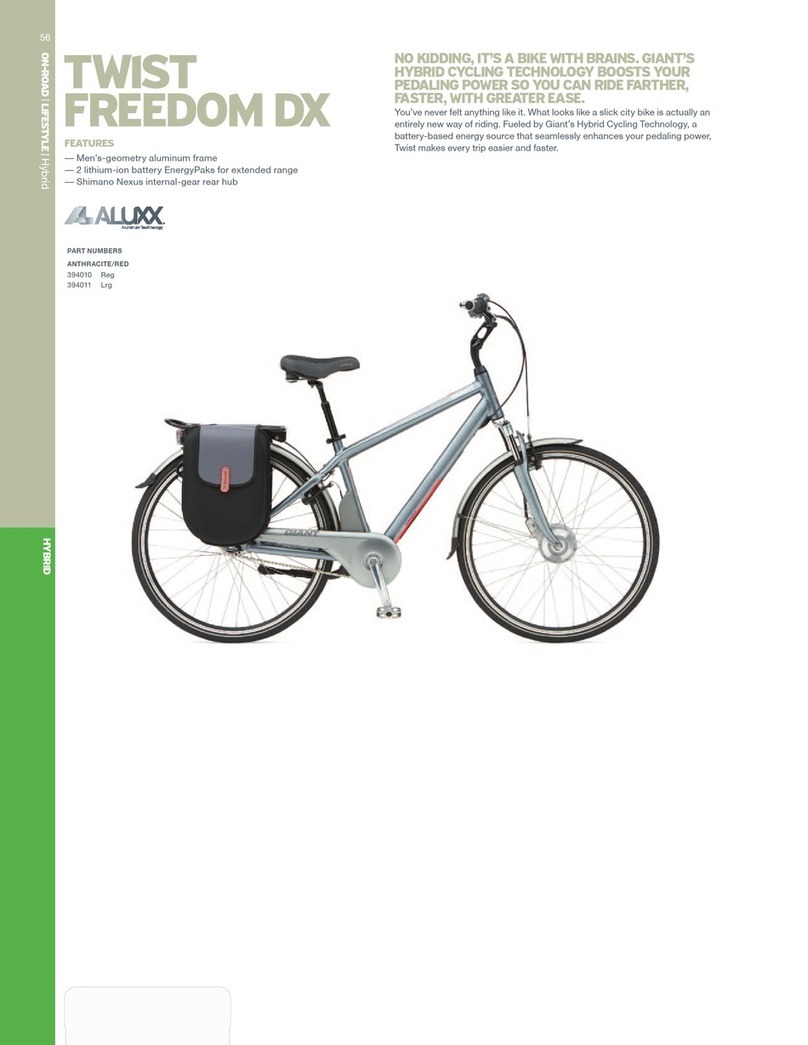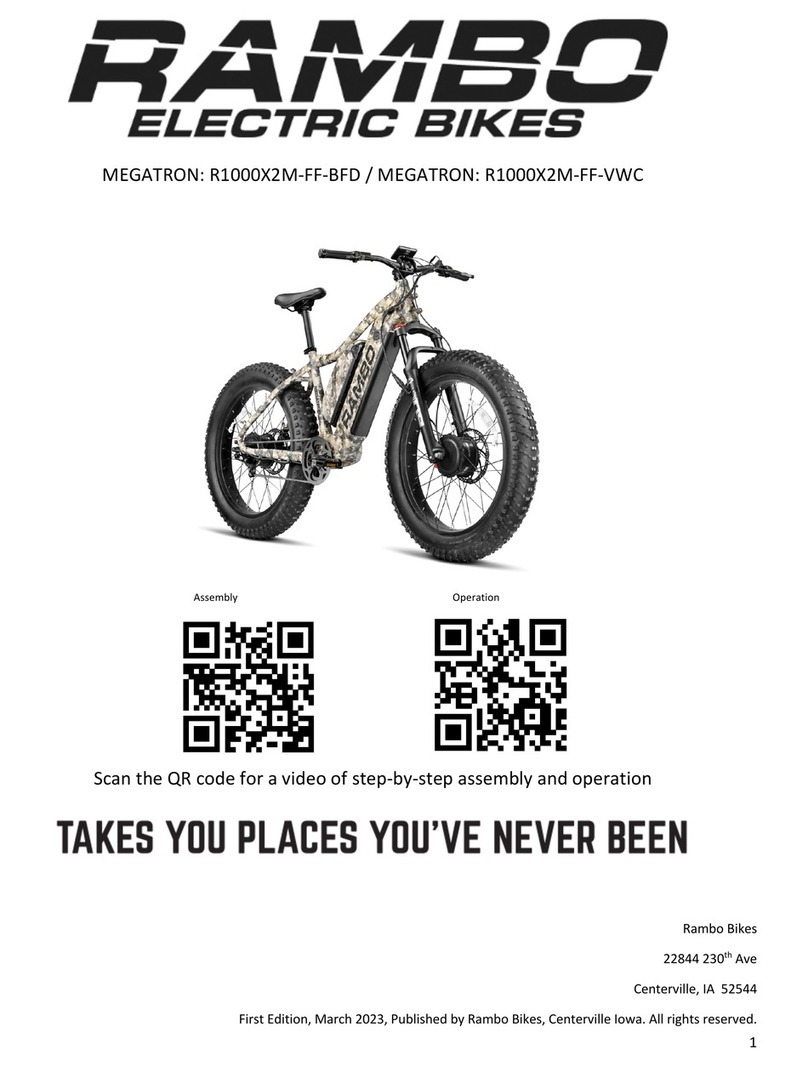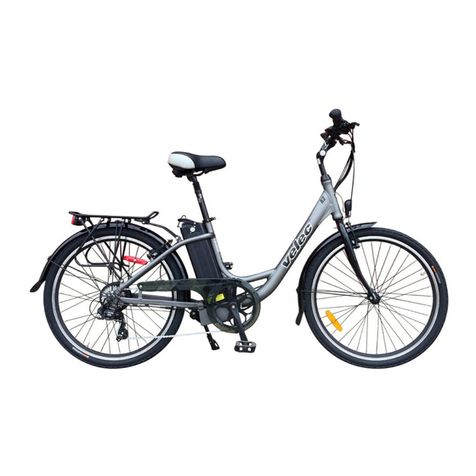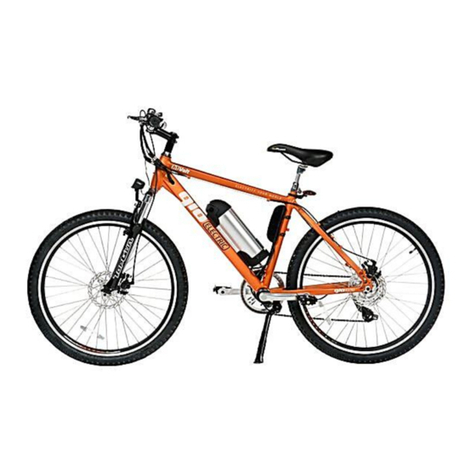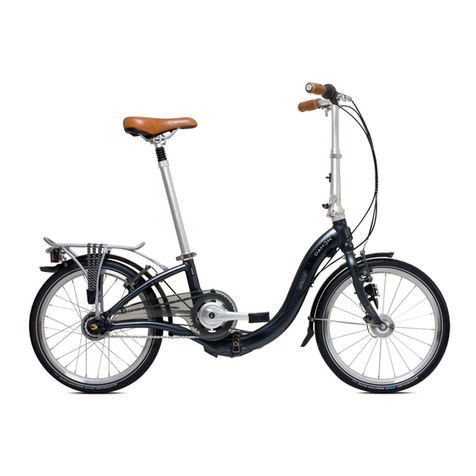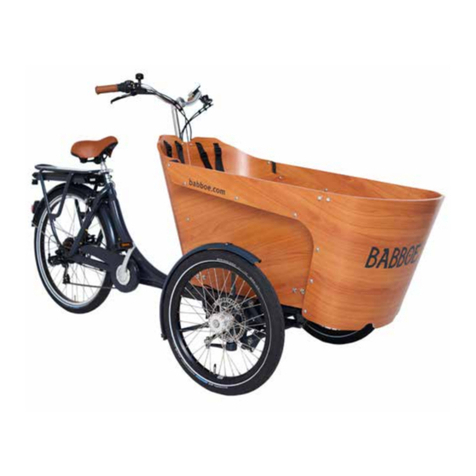
12 ZOLL FAHRRADANWEISUNGEN UND ZUSAMMENBAU
WICHTIG: BITTE LESEN SIE DIESES HANDBUCH VOR DEM ZUSAMMENBAU UND BEVOR SIE
DIESES FAHRRAD FAHREN.
WARNUNG:
.Für 2 Jahre und Alter
. Maximales Kindergewicht: 30KGS
. Die Bolzen und Schrauben vor jeder Fahrt prüfen und festziehen.
. Stellen Sie sicher, dass alle Bauteile vor jeder Fahrt ordnungsgemäßarbeiten.
Die Reifen dürfen nur bis zu dem Druck aufgeblasen werden, der auf der Reifenseite angegeben ist.
. Wenn ein Bauteil beschädigtist odernicht ordnungsgemäßarbeitet, muss es ausgetauscht werden, bevor
Sie das Fahrrad benutzen.
WICHTIG
WARNUNG:
Ein Erwachsener muss beim ersten Zusammenbau des Fahrrads helfen.
Stellen Sie sicher, dass Ihr Fahrrad vollständig zusammengebaut ist, bevor Sie es fahren.
Lesen und verstehen Sie diese Bedienungsanleitung vor der Benutzung des Fahrrades.
VORSICHTSMASSNAHMEN ZUR SICHERHEIT
DiesesFahrradistnichtfürKinderunter2JahrenodermiteinemGewichtüber30kgempfohlen.
Bitte lesen und befolgen Sie die unten aufgeführten Sicherheitshinweise, eine Nichtbeachtung kann zu
Verletzungen oder Beschädigungen des Fahrrades führen.
Bitte zeigen Sie Ihrem Kind den ordnungsgemäßen Betrieb dieses Fahrrades, auch zeigen Sie Ihrem
Kind, die nachstehenden Sicherheitsmaßnahmen zu beachten.
WARNUNG:MITDEMFAHRRADNICHTAUFDERSTRASSEFAHREN.
A.TragenSieeinenHelm.
B.FahrenSie nichtinderNähevonKraftfahrzeugen.
C.ÜbenSiedasBremsenineinersicherenUmgebung.
D. Fahren Sie nie in der Nähe von Treppen, abfallenden Zufahrten, Hügeln, Landstraßen, engen Straßen, in
SchwimmbäderbereichenundnaheandererGewässer.
E.FahrenSiedasFahrradniebeiRegen.NasseOberflächenerhöhendenBremsweg.
F.FahrenSienichtinderNacht.
G. FahrenSienichtzu eng anFußgängern.
H. Vermeiden Sie Gefahren, die Ihre Kontrolle über das Fahrrad einschränken. Schlaglöcher, Furchen, unebenes
Pflaster, Hochwassergitter, Kies, Bordsteine, Blätter, Pfützen und Abfall haben alle einen Einfluss auf Ihr Fahren
